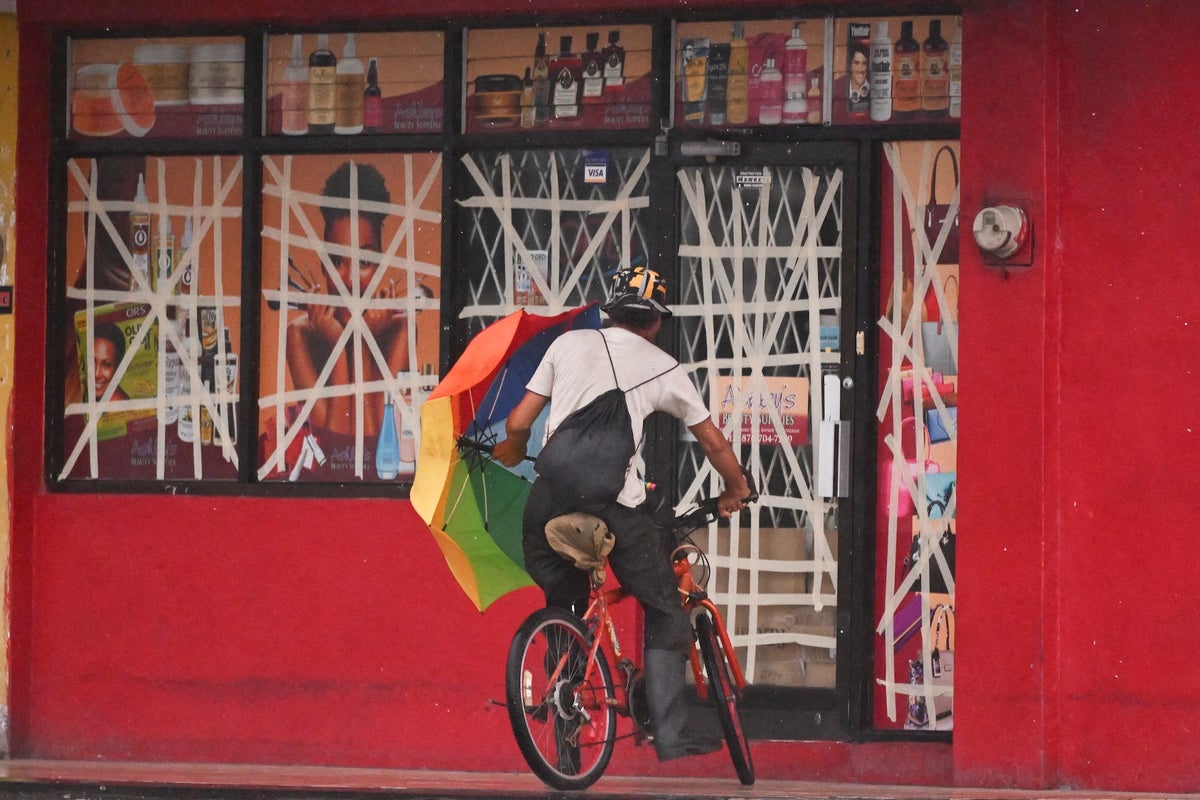On October 27, 2025, as Category 5 Hurricane Melissa approaches Jamaica, experts warn that it could become the most devastating storm ever to strike the Caribbean island, potentially surpassing the destruction wrought by Hurricane Gilbert in 1988. Hurricane Melissa’s unprecedented strength, combined with its unusually slow movement and the direction from which it is approaching, presents a grave threat to Jamaica’s coastline and population, raising concerns about widespread damage and prolonged suffering.
Hurricane Gilbert remains one of the most infamous storms in Jamaica’s recent history. Striking the island as a Category 4 hurricane, Gilbert unleashed a 19-foot storm surge on the eastern shore, along with torrential rains and powerful winds that caused catastrophic damage. According to the U.S. National Oceanic and Atmospheric Administration (NOAA), Gilbert claimed 49 lives, destroyed approximately 100,000 homes, and caused around $700 million in damages. The storm’s impact was so severe that it left lasting scars on the affected communities, particularly in the parish of St. Thomas on Jamaica’s eastern end, where entire homes were obliterated.
However, Hurricane Melissa is projected to be far more intense and destructive than Gilbert. Currently classified as a Category 5 storm, Melissa’s maximum sustained winds have reached an astonishing 185 miles per hour, making it one of the most powerful hurricanes ever recorded in the Atlantic basin. In comparison, Gilbert’s winds peaked at 130 miles per hour upon striking Jamaica. This exceptional intensity alone poses an enormous risk, but other factors exacerbate the threat Melissa poses.
One key difference is the storm’s approach. Melissa is moving toward Jamaica from the south, which exposes a longer stretch of the island’s coastline to the hurricane’s storm surge and high winds. Jamaica’s capital city, Kingston, located on the southern shore, is directly in the potential path of this powerful storm. This contrasts with Gilbert’s approach from the east, which concentrated its impact on a comparatively shorter segment of coastline.
Moreover, Melissa is advancing at a notably slow pace—creeping along at just 3 to 5 miles per hour, whereas Gilbert moved at around 12 miles per hour. This sluggish movement means that the storm’s destructive forces—high winds, storm surge, and intense rainfall—will batter the island for a much longer period than is typical for hurricanes. Phil Klotzbach, a senior research scientist at Colorado State University who specializes in hurricane studies, highlighted this concern, noting, “It’s barely moving,” which could translate into prolonged devastation.
The slow pace has already resulted in days of persistent rainfall across Jamaica, with many areas receiving more than a foot of rain. Forecasts suggest that some regions could endure up to 30 inches, with isolated spots potentially seeing as much as 40 inches. Given Jamaica’s hilly terrain, such heavy rainfall is especially dangerous, as it increases the risk of flash floods and landslides, which can cause further destruction and threaten lives beyond the immediate impact of the hurricane’s winds.
Storm surge, the rise in sea level caused by the hurricane’s winds pushing water toward the shore, is another critical concern. Melissa’s surge is expected to reach between nine and thirteen feet above ground level, but the exact locations of the worst flooding will depend on the storm’s precise path. Even minor shifts in trajectory could significantly alter which areas face the brunt of the surge. If Melissa drifts farther west before turning sharply northeast, the eastern half of the island, including Kingston, may avoid the worst of the flooding. Nonetheless, the uncertainty adds to the anxiety surrounding the storm.
In response to the looming threat, the Jamaican government has mandated evacuations in flood-prone zones to protect vulnerable communities. Utility providers are also preparing for extensive recovery efforts after the storm passes. Hugh Grant, CEO of the Jamaica Public Service Company (JPS), warned of potentially unprecedented damage to infrastructure during a media briefing. “A Category Four hurricane potentially going through the middle of our island could have unprecedented damage on our facilities,” Grant said. He emphasized that restoration might require rebuilding entire systems rather than simple repairs, underscoring the severity of the anticipated destruction.
Jamaica has a history of encountering hurricanes, but direct hits by major storms—those classified as Category 3 or higher—are relatively rare. Historical records dating back to the late 19th century indicate that only five such major hurricanes have struck the island, all of which were either Category 3 or Category 4 storms. No

